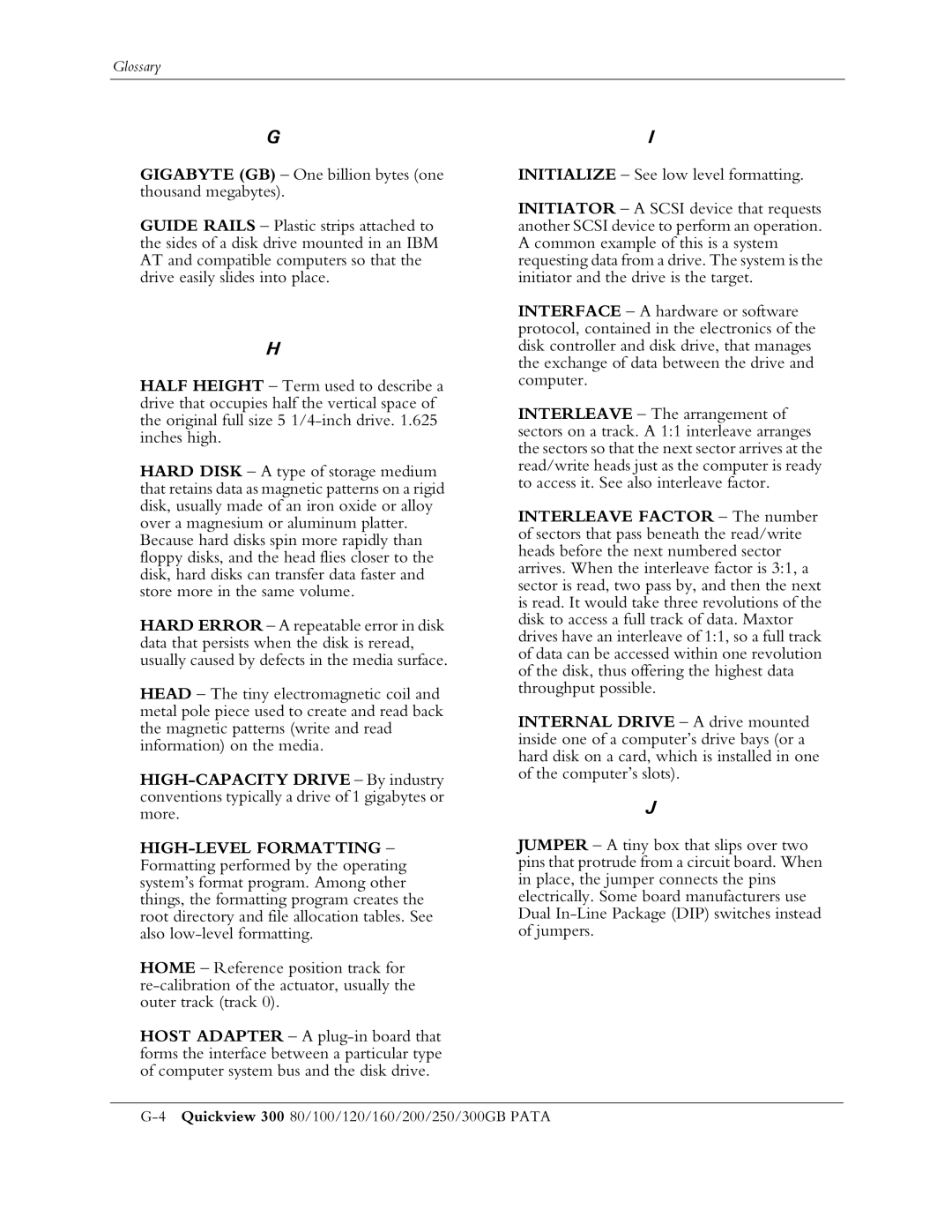
Glossary
G
GIGABYTE (GB) – One billion bytes (one thousand megabytes).
GUIDE RAILS – Plastic strips attached to the sides of a disk drive mounted in an IBM AT and compatible computers so that the drive easily slides into place.
H
HALF HEIGHT – Term used to describe a drive that occupies half the vertical space of the original full size 5
HARD DISK – A type of storage medium that retains data as magnetic patterns on a rigid disk, usually made of an iron oxide or alloy over a magnesium or aluminum platter. Because hard disks spin more rapidly than floppy disks, and the head flies closer to the disk, hard disks can transfer data faster and store more in the same volume.
HARD ERROR – A repeatable error in disk data that persists when the disk is reread, usually caused by defects in the media surface.
HEAD – The tiny electromagnetic coil and metal pole piece used to create and read back the magnetic patterns (write and read information) on the media.
HOME – Reference position track for
HOST ADAPTER – A
I
INITIALIZE – See low level formatting.
INITIATOR – A SCSI device that requests another SCSI device to perform an operation. A common example of this is a system requesting data from a drive. The system is the initiator and the drive is the target.
INTERFACE – A hardware or software protocol, contained in the electronics of the disk controller and disk drive, that manages the exchange of data between the drive and computer.
INTERLEAVE – The arrangement of sectors on a track. A 1:1 interleave arranges the sectors so that the next sector arrives at the read/write heads just as the computer is ready to access it. See also interleave factor.
INTERLEAVE FACTOR – The number of sectors that pass beneath the read/write heads before the next numbered sector arrives. When the interleave factor is 3:1, a sector is read, two pass by, and then the next is read. It would take three revolutions of the disk to access a full track of data. Maxtor drives have an interleave of 1:1, so a full track of data can be accessed within one revolution of the disk, thus offering the highest data throughput possible.
INTERNAL DRIVE – A drive mounted inside one of a computer’s drive bays (or a hard disk on a card, which is installed in one of the computer’s slots).
J
JUMPER – A tiny box that slips over two pins that protrude from a circuit board. When in place, the jumper connects the pins electrically. Some board manufacturers use Dual
